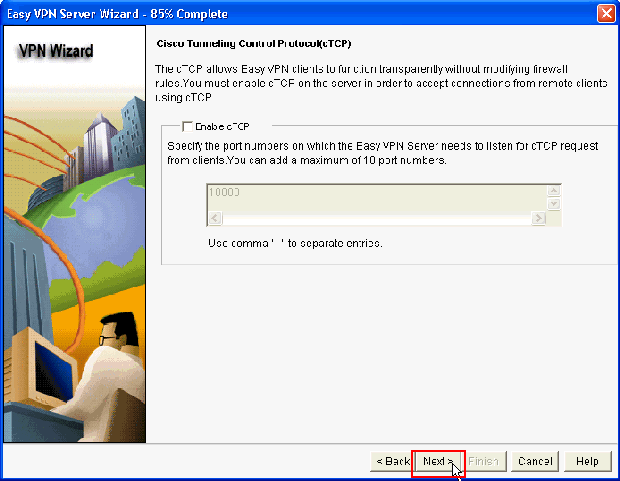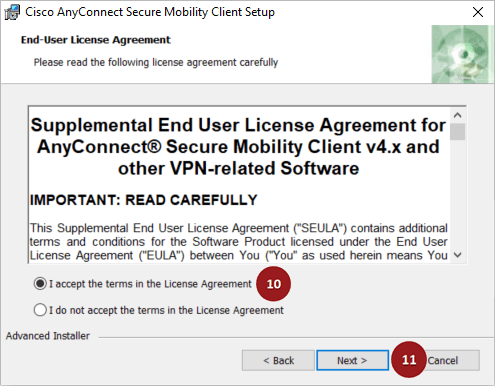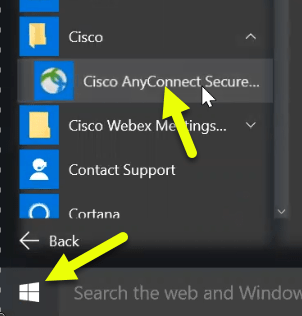- Cisco Anyconnect Secure Mobility Client
- Cisco Anyconnect Usc Columbia
- Cisco Anyconnect Ucr
- Latest Version Of Cisco Anyconnect
STEP 1: ACTIVATE Cisco VPN (ONLY IF YOU NEED TO USE IT!!)
Please be aware that you DO NOT need to use AnyConnect VPN when accessing Blackboard, Zoom, Workday, ServiceNow, Microsoft Office 365 or Google Apps at USC
Q
 : What is VPN?
: What is VPN? The Cisco AnyConnect internal USC The — But when I that USC IT didn't NETWORK (VPN) - USC AnyConnect VPN Client. Windows 10 Built in VPN client to access Using Cisco AnyConnect VPN. A VPN connection, I resources and services while STEPS TO DOWNLOAD AND Chan Division of VPN client to access Mobility Client is a VPN Application. The Cisco AnyConnect Secure Mobility client is a web-based VPN client that does not require user configuration. Use Cisco AnyConnect VPN to securely access the Student Information System (SIS) and other IT administration systems VPN, also called IP tunneling, is a secure method of accessing USC computing resources. Oct 06, 2020 For additional information about USC VPN service, please visit: Cisco AnyConnect VPN The Cisco AnyConnect VPN client is available only to members of the USC community with a USC login. Mar 15, 2020 The Cisco AnyConnect Secure Mobility client is a web-based VPN client that does not require user configuration. Use Cisco AnyConnect VPN to securely access the Student Information System (SIS) and other IT administration systems VPN, also called IP tunneling, is a secure method of accessing USC computing resources. Using Cisco AnyConnect VPN To access the Remote Desktop/Terminal Server from outside of USC, you need to first run the Cisco AnyConnect VPN program to create a secure connection between your computer and USC. If you don’t have Cisco AnyConnect VPN on your computer, follow the instructions for downloading and installing Cisco AnyConnect VPN.
- A: VPN is an acronym for Virtual Private Network. VPN is a 'virtual' or digital tunnel that is created between your computer and USC systems using the Internet that secures your connection and protects you from Internet malware and hackers.
Please check if you need VPN. You DO NOT need to use AnyConnect VPN when accessing Blackboard, Zoom, Workday, ServiceNow, Microsoft Office 365 orGoogle Apps at USC. However, some USC systems and access to the FMS/CCD network drives will require the use of VPN.
Q: How do I use VPN?
- A: First you will need to install the software. Click here to download and install the software.
After the software is installed, look for the Cisco Anyconnect Secure Mobility Client and activate it.- Enter the VPN server to connect: vpn.usc.edu
- Click Connect to start the VPN
- Login with your USC NETID and USC Credentials
4. If all goes well, the VPN is now activated and you can start connecting to USC systems securely.
If you require assistance with configuring the VPN on your computer please contact the FMS/CCD Network Services/IT help desk (below). - Enter the VPN server to connect: vpn.usc.edu
STEP 2: CHECK your computer for the presence of these applications:
- Microsoft: MS Word, MS Excel, MS Powerpoint, MS Access
- Adobe Acrobat
- Firefox Web browser
- Chrome Web browser
- Sophos Anti-virus
Q: If I don't have these applications, who do I contact?

- A: Please contact FMS/CCD Network Services/IT (below is the contact information).
- Microsoft Applications are available free of charge to USC students, faculty and staff. To install the Microsoft software, go to this link: https://itservices.usc.edu/officefacstaff/
- The other applications: Adobe Acrobat, Firefox and Chrome web browser, are available for free download from each of the respective product website.
- To install the Sophos Anti-virus or for assistance with installing any of the software above, please contact FMS/CCD Network Services/IT for assistance.
STEP 3: GO to the Facilities Website to access all the important USC links to web applications (Workday, e-Market, FAMIS, Kronos etc.)

STEP 4: CHECK that you have access to shared drives. (Please contact Nework Services/IT for assistance)
After activating the VPN, to access the network drives, download the cmdlets to your computer and activate them for the drive you want to access.
Q: What are these?
- A: The shared drives, are used by various FMS and CCD staff to share files such as Excel, Word, PDF files etc. Normally, when you are in the office and logging in to your office computer, these drives are automatically available after logging in. However, if you are working remotely, these drives will not be available automatically.
To get access to these drives, just download the files (also called commandlets or cmdlets for short) that correspond to the drive you want to access and then double click it.
Follow the instructions to login, to get access to the shared drive.
Q: Do I have to download these files?
- A: These network drives are only used by FMS and CCD staff for sharing files. If you don't have any files stored in these drives, then you don't need to download these cmdlets.
STEP 5: REMOTELY ACCESS your office computer (for those users who have been assigned a computer for exclusive use in the office).
- App to use (Windows 10): Remote Desktop Connection
Q Minitool partition wizard full 2018 espanol. : What is Remote Desktop Connection?
A: Remote Desktop Connection is a built in feature of Windows computers. It allows you to connect to your office computer ('remote computer') from outside the office (like at home) and remotely control it.
So, you are able to access all the programs in the office computer using your home computer and actually operate the office computer without actually being physically present in the office.
Remote Desktop Connection allows you to truly work from home while still using the office computer that you are used to working with.
Q: Is Remote Desktop available to everybody?
- A: No, it is only available to users who have a computer that they use exclusively in the office.
Q: How do I use Remote Desktop Connection?
- A: To use Remote Desktop, you will need the IPAddress or Hostname of your office computer. To find out what the hostname of your office computer is, right click on the office computer icon and go to properties. Look for computer name. This will be the host name you will use to connect to your office computer.
If you are not able to find your office computer hostname, please contact FMS/CCD Network Services/IT for assistance.
Q: What if it doesn't work?
- A: A lot of things can be the reason why Remote Desktop may not work. Sometimes, it can be related to your WIFI provider or it can be something else that needs to be configured on your computer or the hostname may be incorrect etc.
If Remote Desktop is not working for your computer please contact FMS/CCD Network Services/IT for assistance.
Q: Remote Desktop sounds complicated, do I have to use it?
- A: It depends. If you just have access to USC web based systems (such as Kuali, eMarket, Workday etc.) and the shared drives, you don't need to use it.
But if you want to use the applications that are already installed in your computer and if some of those applications are licensed in such that you can only use it with your office computer, then you will need to use Remote Desktop.
Remote Desktop is just another option to be able to work remotely. For some people who have used and experienced it, it's the best, fastest and most secure way to work remotely.
FMS/CCD Network Services/IT fully recommends it, if you have a computer in the office that you can remotely access and control.
STEP 6: CHECK that your mobile device/phone can access USC email.
Q: How can I receive USC emails on my iPhone or Samsung phone?
- A: Microsoft Office 365 apps are available for download from the Apple App Store (for iPhone and iPad) and the Google Play Store (for Android devices).
Q: If I don't want to download the app can I still receive USC emails on my iPhone or Samsung phone?
Cisco Anyconnect Secure Mobility Client
- A: Yes. You can add the USC Email as an additional account in iPhone or Android devices. This involves using the built-in mail client for your mobile device and does not rely on an iPhone or Android app.
Follow the instructions here for your mobile device: https://itservices.usc.edu/office365/mobile/
However, If you need assistance with doing this please contact the FMS/CCD Network Services/IT help desk (below).
STEP 7: Use ZOOM for virtual meetings
Q: What is ZOOM?
- A: Zoom is the software that USC has made available to students, faculty and staff, free of charge for use with creating and attending virtual or online meetings.
A virtual meeting means that you are not physically present during the meeting but attending the meeting 'virtually' using just a computer or phone.
In this virtual meeting presentations or videos can be shared for viewing by all attendees and attendees can also participate in discussions via phone, computer microphone or chat via the Zoom application.
Q: Is ZOOM difficult to use?
- A: No. ZOOM is one of the easiest virtual meeting application to learn and use and it's free! For more information and for training click here for the USC Zoom website (https://usc.zoom.us/).
STEP 8: CONTACT FMS/CCD Network Services/IT if you need IT assistance:
- Email: Felix (roces@usc.edu), Rey (boncato@usc.edu)
- Call: Help Desk: (213) 740-7324, (213) 821-1833
Note: If for whatever reason you are not able to get any response, please call USC ITS directly at (213) 740-5555 for IT assistance.
Using Cisco AnyConnect VPN
To access the Division’s remote drives (S:, U:, and R:/LawMatt) from outside of USC, you need to first run the Cisco AnyConnect VPN program to create a secure connection between your computer and USC. If you don’t have Cisco AnyConnect VPN on your computer, follow the instructions for downloading and installing Cisco AnyConnect VPN.

If you are at USC, using either the local network, or USC Secure Wireless (not USC Guest Wireless), you don’t need to run Cisco AnyConnect VPN to access the Division’s remote drives.
Connecting to Remote Drives (S:, U:, and R:/LawMatt) from Windows
To access the Division’s remote drives (S:, U:, and R:/LawMatt) from your Windows PC:
Cisco Anyconnect Usc Columbia
- If you are outside of USC, run Cisco AnyConnect VPN to create a secure connection between your computer and USC. (If you are at USC, you can skip this step.)
- Open File Explorer.
- Either:
- click on This PC in the menu to the left, and then on Map network drive at the top of the window;
or:
- right-click on This PC and then click Map network drive… in the pop-up menu that appears.
The Map Network Drive window will open.
To map the S: drive, choose S: using the Drive: drop-down menu, and enter fs1.osot.usc.eduosot$ in the Folder: box. Check Connect using different credentials, then click Finish.
When prompted for network credentials, use your Chan account username and password, preceding your username with OSOT. Click OK to finish.
To map the U: drive, repeat steps 3 to 5, choosing U: from the Drive: drop-down menu, and entering fs1.osot.usc.eduusers$username in the Folder: box, where username is your Chan account username.
To map the R:/LawMatt drive, repeat steps 3 to 5, choosing R: from the Drive: drop-down menu, and entering fs1.osot.usc.edulawmatt$ in the Folder: box.
Cisco Anyconnect Ucr

Latest Version Of Cisco Anyconnect
Best torrent client for seeding. If you need further help, please contact Chan IT staff at .(JavaScript must be enabled to view this email address).
